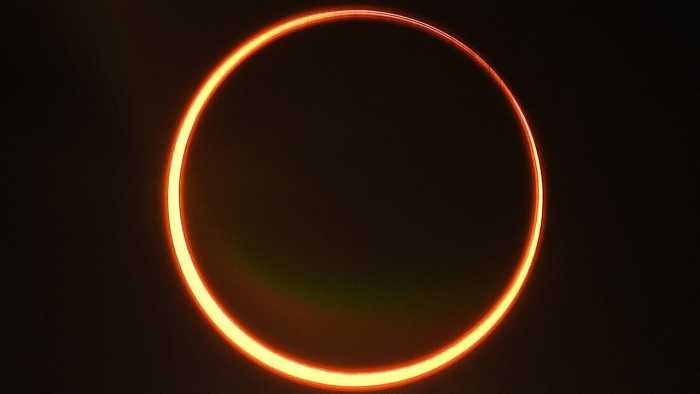
The first solar eclipse of this year takes place on the summer solstice, which is the longest day in the Northern Hemisphere.
People living along the path of annular eclipse passing through Anupgarh and Suratgarh in Rajasthan, Sirsa, Jakhal, Kurukshetra and Yamunanagar in Haryana and Dehradun, Tapowan and Joshimath in Uttarakhand will be able to see the annular phase. People in rest of India can witness a partial eclipse.
When Moon comes between the Sun and Earth, the shadow falls on the surface of the Earth. The Sun is entirely covered by the Moon for a brief period. Those places that are engulfed by the dark, dense umbral shadow of the Moon experience the total solar eclipse.
In the regions that plunge into the soft diffused penumbral shadow of the Moon experience the partial eclipse. In all solar eclipse the Sun, Moon and Earth may not be perfectly aligned and then there is a partial eclipse. When the three celestial bodies happen to be in a straight line, there is total solar eclipse.
Ministry of Science and Technology has urged people not to use sunglasses, goggles, exposed x-ray sheet or lampblack over a glass as they are not safe. It said, viewing the Sun’s image on the surface of the water is also not safe.
The Ministry said, welders glass 13 or 14 can be used to see the Sun directly with naked eyes. People can make a pinhole in a card sheet and hold it under the Sun, at some distance, keep a screen of white paper. Image of the Sun can be seen on this sheet. By adjusting the gap between the sheet and the screen, the image can be made larger.
People can look at the shadow of a bush or a tree. With the gaps between the leaves acting like a pinhole, numerous images of the eclipsed Sun can be seen on the ground. People can use a strainer for making pinhole images.
People can also cover the compact makeup kit mirror with black paper, with a small hole at the centre. Reflect the image of the Sun on a distant wall in shadow. People can get a projected image of the eclipsed Sun.
Bhuj will be the first town in India to see the beginning of the eclipse 9.58 a.m. The eclipse ends four hours later at Dibrugarh, Assam at 2.29 p.m. Ghersana at the western boundary of India will be the first to witness the annular phase of the eclipse at 11.50 a.m.
It will last for 30 seconds. Kalanka peak in Uttarakhand will be the last major landmark to see the annular eclipse at 12.10 p.m. lasting for 28 seconds.